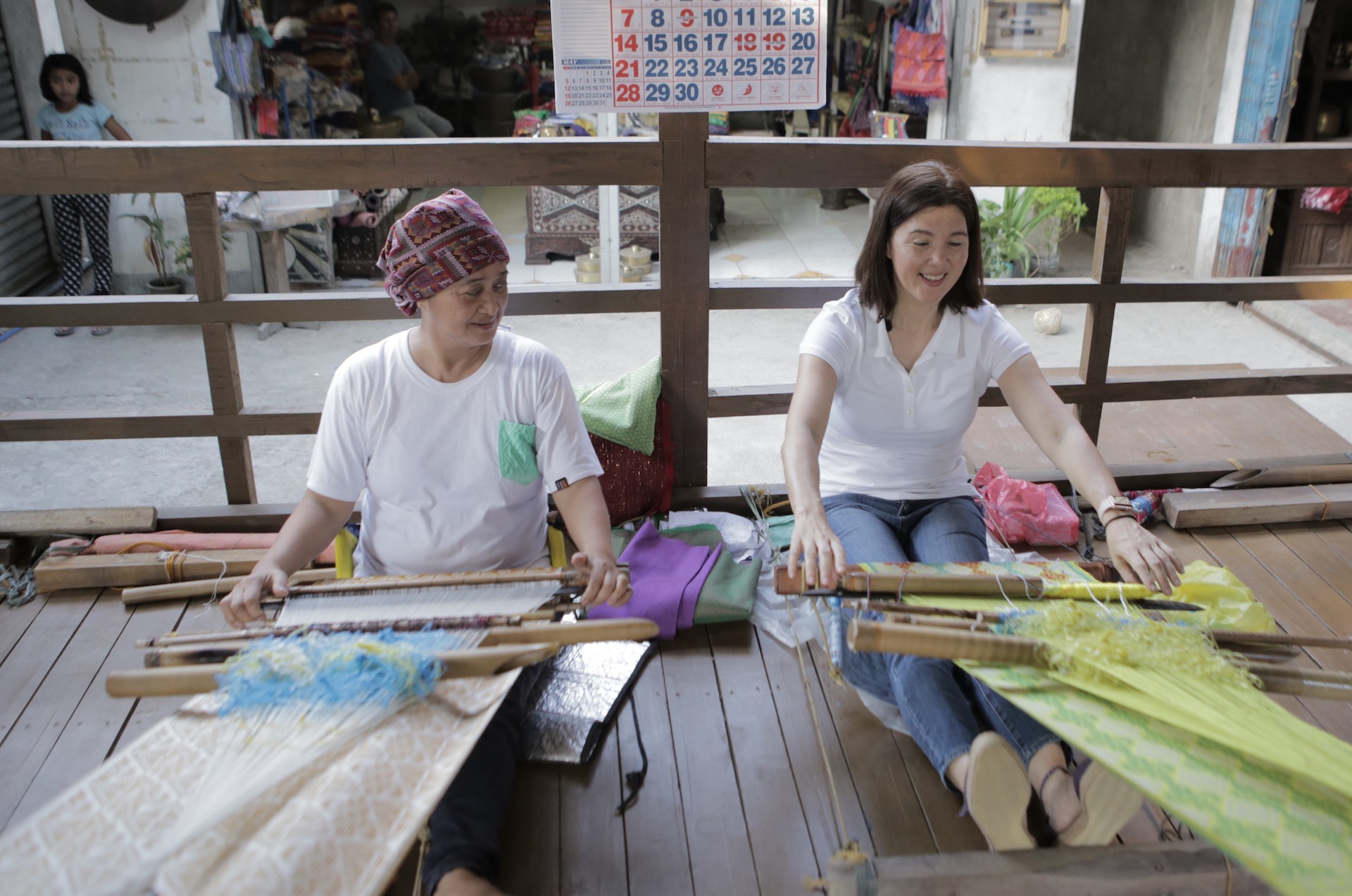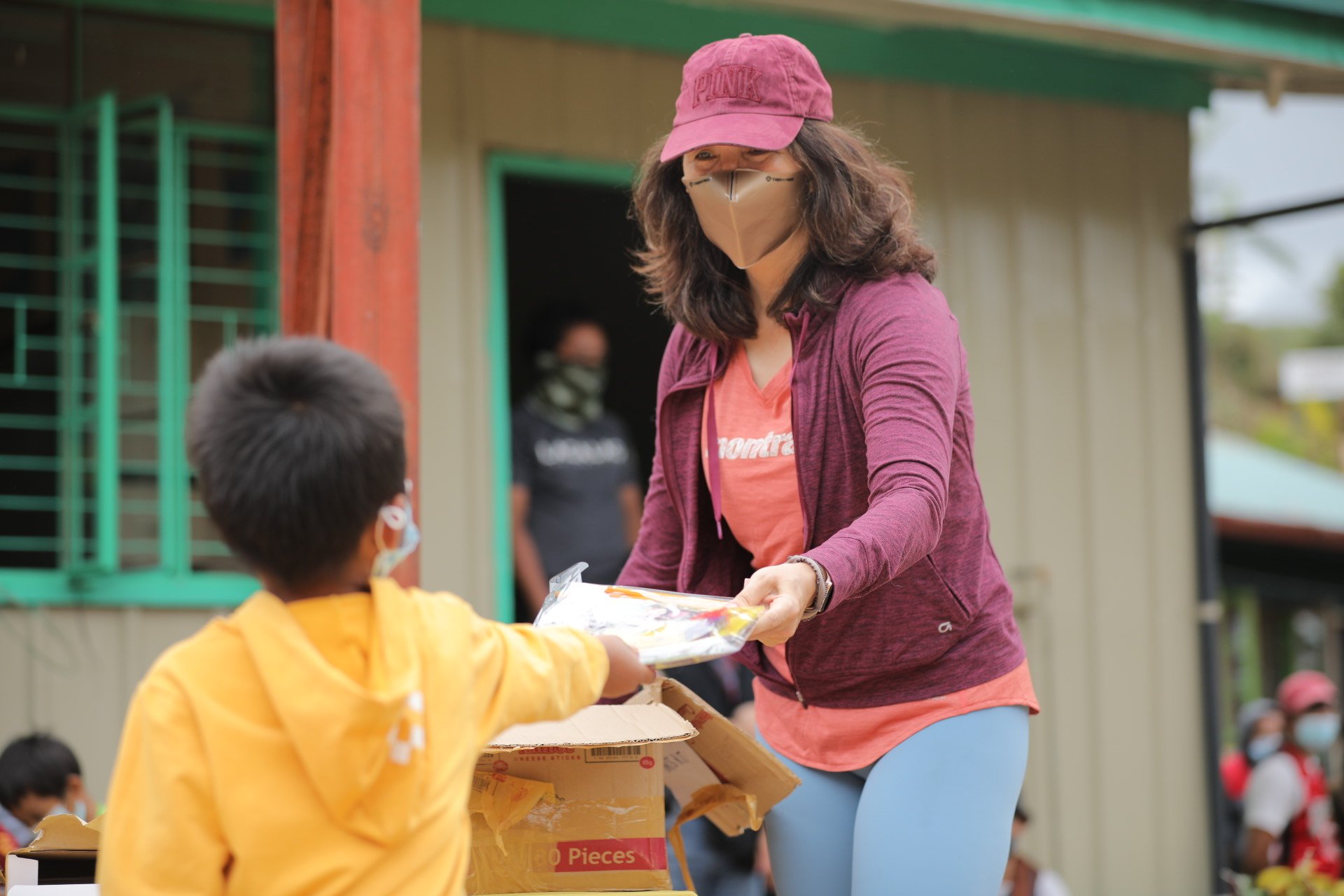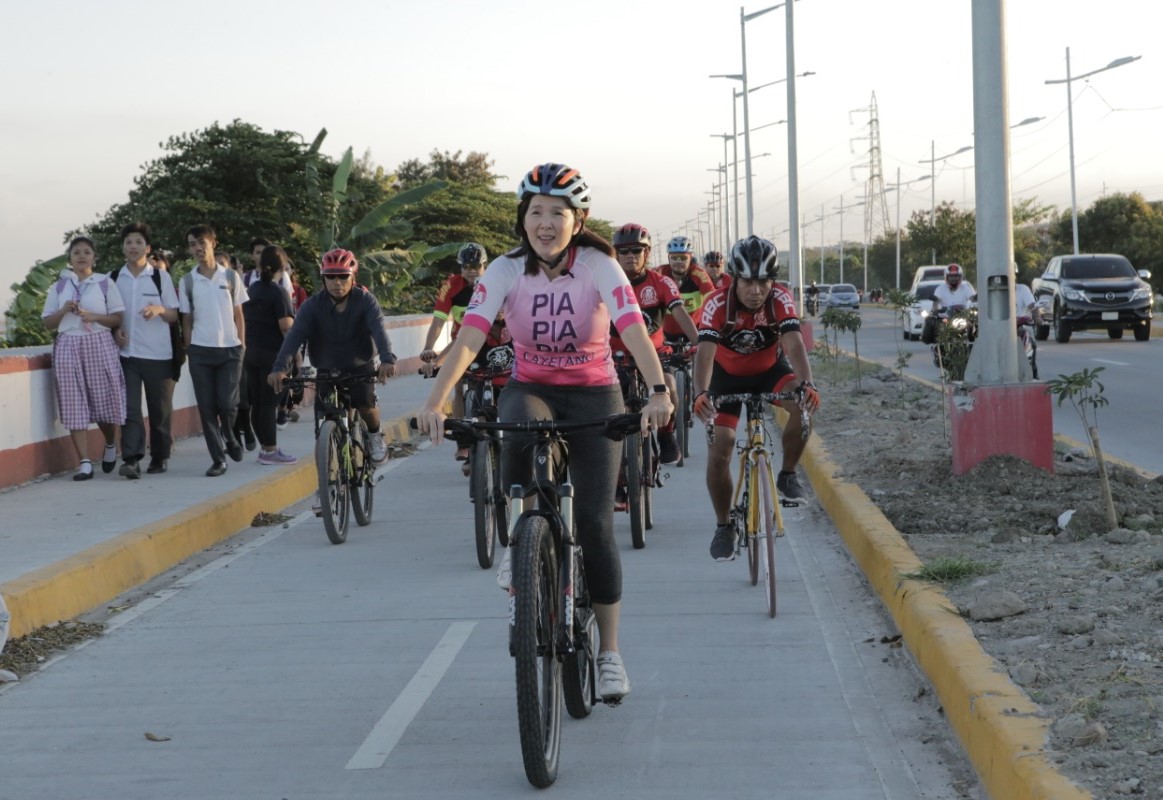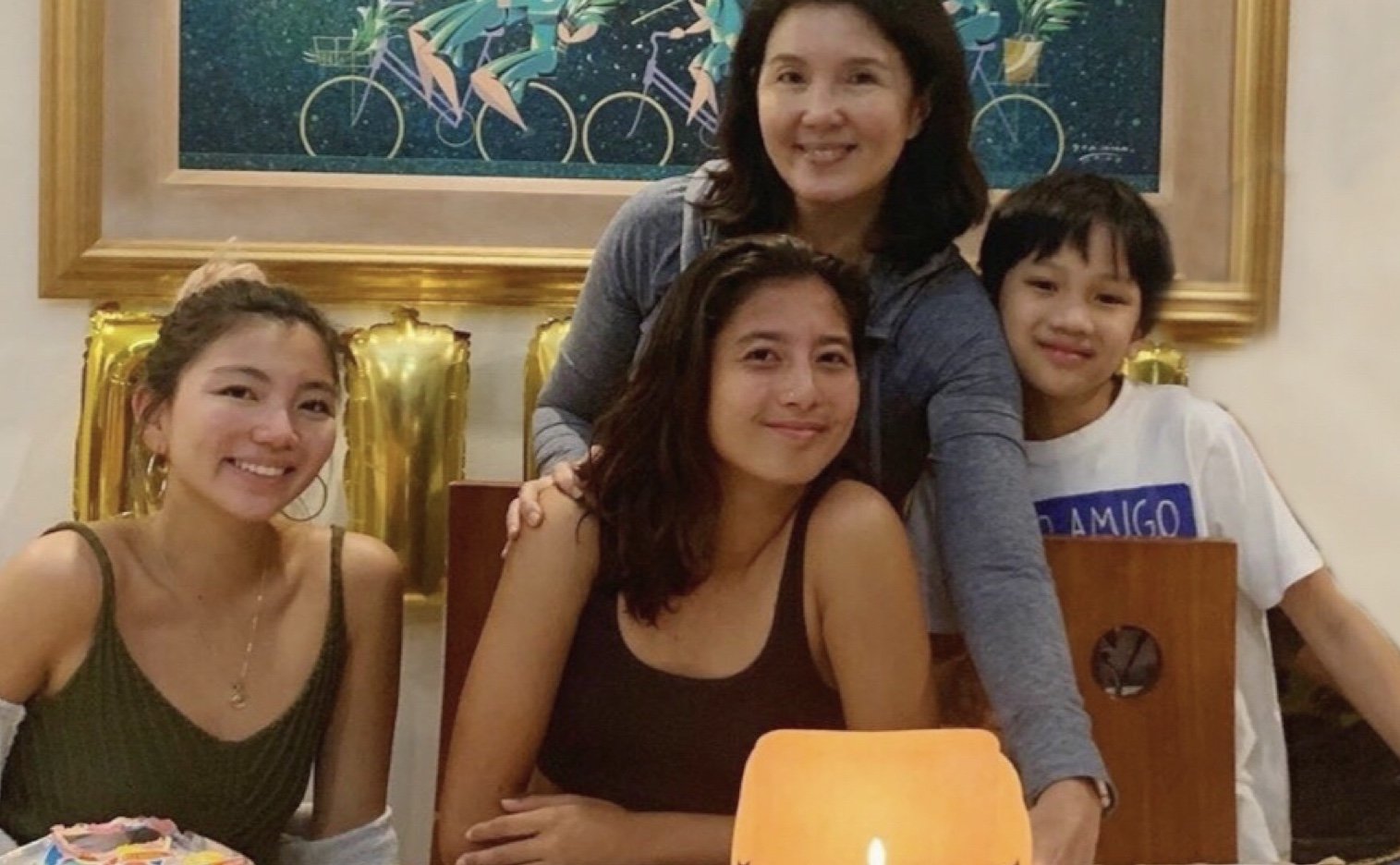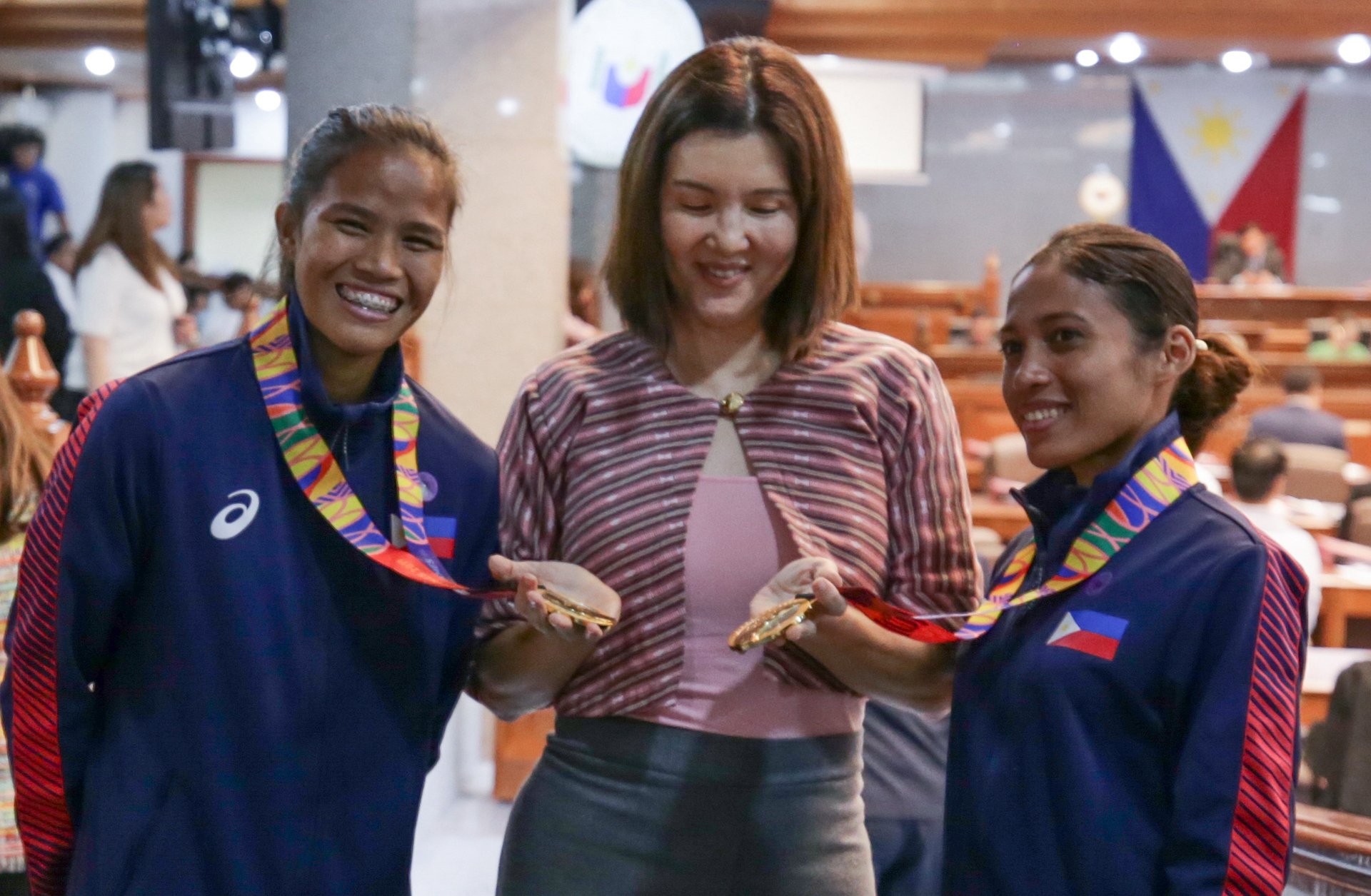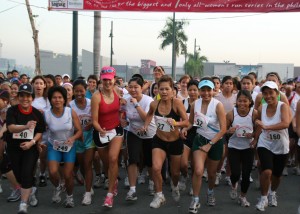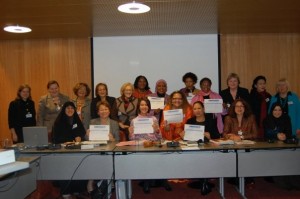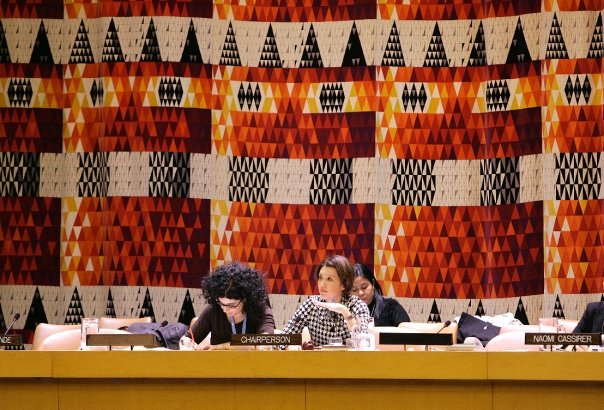At the Tokyo Marathon Expo, the theme was “I Promise my Goal.” Not a perfect English translation, but we figured it meant set your goal and accomplish it. That sort of pressured me to do just that. Thing is, I didn’t really want the stress and the pain of attempting to break 4 hours again. The last time I tried five months ago, I missed it by 2 seconds! But even though I had less time to train for this one, the night before the race I decided I would to try again. I would run an under-4 hour pace for the first 21k and then see how it went from there.
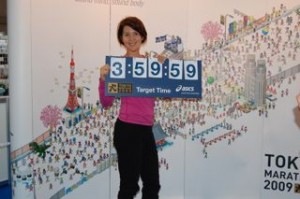
With that decision, I had to stay up an hour later, scribbling my splits per km on my white medical tape which I taped to my wrist. Arggh!

I was actually out late the night before mingling with the other guests of the Tokyo Metropolitan Govt. Officials from other countries were there and I had a wonderful exchange with the women representatives from Singapore, Thailand and Japan, talking about women issues, like discrimination and empowerment. I was the only guest who was running the race. All the others were just there to observe.
Race Day:
The holding area was filled with runners, not a surprise since there were 35,000 participants. I was hoping that they would release the runners in waves so it would not be as crowded when we started running. But as I had feared, it was still very congested at the start and we were forced to run at a much slower pace for the first two kms until the runners spread out more.
As the run progressed, there didn’t turn out to be much to see. There was just building after building and then more buildings. But what was interesting were the people who ran in costumes. I was passed by a slimmer version of Winnie the Pooh, a clown and lots of runners in funny hats. I also spotted a gay fairy and most memorable of all was a girl who passed me in angel wings. I remember thinking, buti pa siya may pakpak.
To my utter horror my garmin malfunctioned and was showing wild numbers for my pace. Grrr! Oh well, the race went on. After about four hours of running, what will forever be etched in my mind is the finish line. The last three kilometers we ran thru the howling winds and the pouring rain. I had to hold on to my cap and shades because it already got blown off early in the race. It was never sunny enough to put on my shades.
Into the last 3kms, I already knew that we would not break 4 hours. We might have if I had been able to maintain a 5:30min/k pace at 35kph. But at km 39, we had about 14 minutes left and I had slowed down a bit. I told Joey he could do it, but being the gentleman that he is, he said we would finish together.
So we pushed thru the wind, climbing one of the very few bridges, where to our delight the theme song of Rocky was blaring (Joey and I are Rocky fans because we box as part of our cross training). The Japanese spectators enthusiastically cheering us on, sadly in a language that was totally foreign to me.
At the 1km mark, the crowd got thicker, the cheering got louder and the rain poured harder. I loved it!
By then I started looking out towards the bleachers, because my kids and Che were suppose to be there. When we turned the last bend, I finally saw the finish line! I felt like I was running in slow motion because I can remember carefully scanning the faces in the crowd trying to find my children.
I was suddenly knocked out of my slow-mo mode when this female runner in blue tried to run pass me just a hundred meters to the finish. I outsprinted her and Joey and I crossed the finish line in 4:04 but still no children in sight.
Then right after I crossed, to my right I saw them, my two girls smiling, clapping standing in the rain in raincoats! I had requested that our host the Tokyo Metropolitan Government arrange to have my kids at the finish line, but I expected them somewhere up in the bleachers. I was blown away. I was so so happy to see them. This was my birthday gift good health and my family.
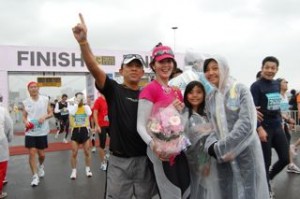
My kids were with Che (who did her first 10k, woohoo!) Usec Cesar Lacuna of MMDA who gave me beautiful pink flowers!!!!…and the people from the Tokyo Metropolitan Government in their suits (reminding me of Men in Black) .. all of them standing in the rain in raincoats cheering for us.
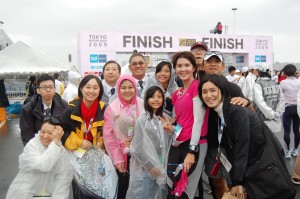
After I hugged them, we lined up to get our goodies and then Joey and I did what we always do after a race. We ran again. Just 1km.. to celebrate life.
Oh and what does “I promise my goal” mean? Well, the Japanese refer to the finish line as the “goal.” So, I promise my goal, means to finish.. I guess we can say that we accomplished that. Meanwhile, I still have my under 4 hour marathon to work on. Maybe next birthday run.
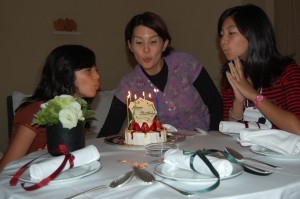
n.b. I will write another article about the race course, race conditions and other details runners may want to know.

